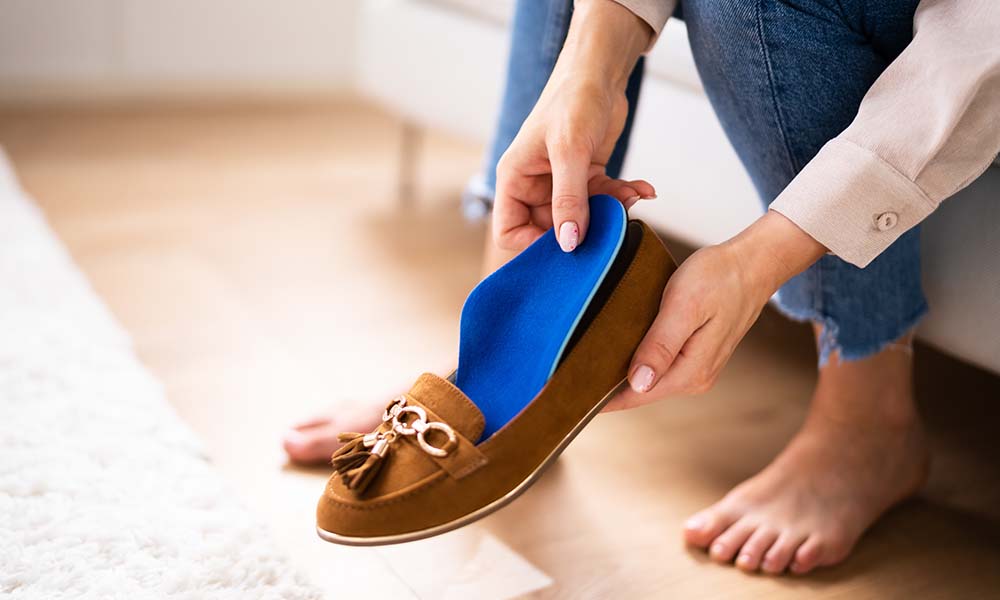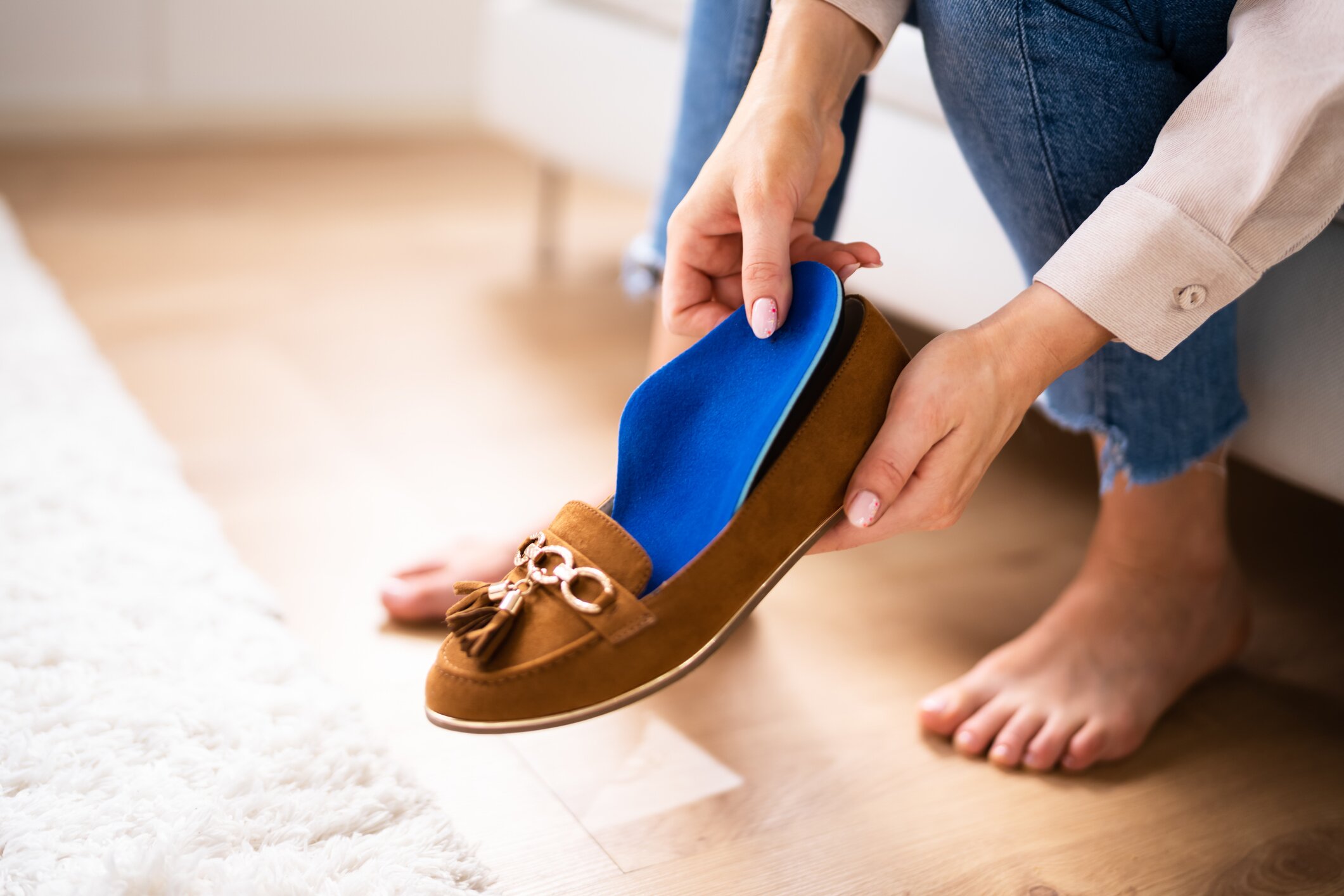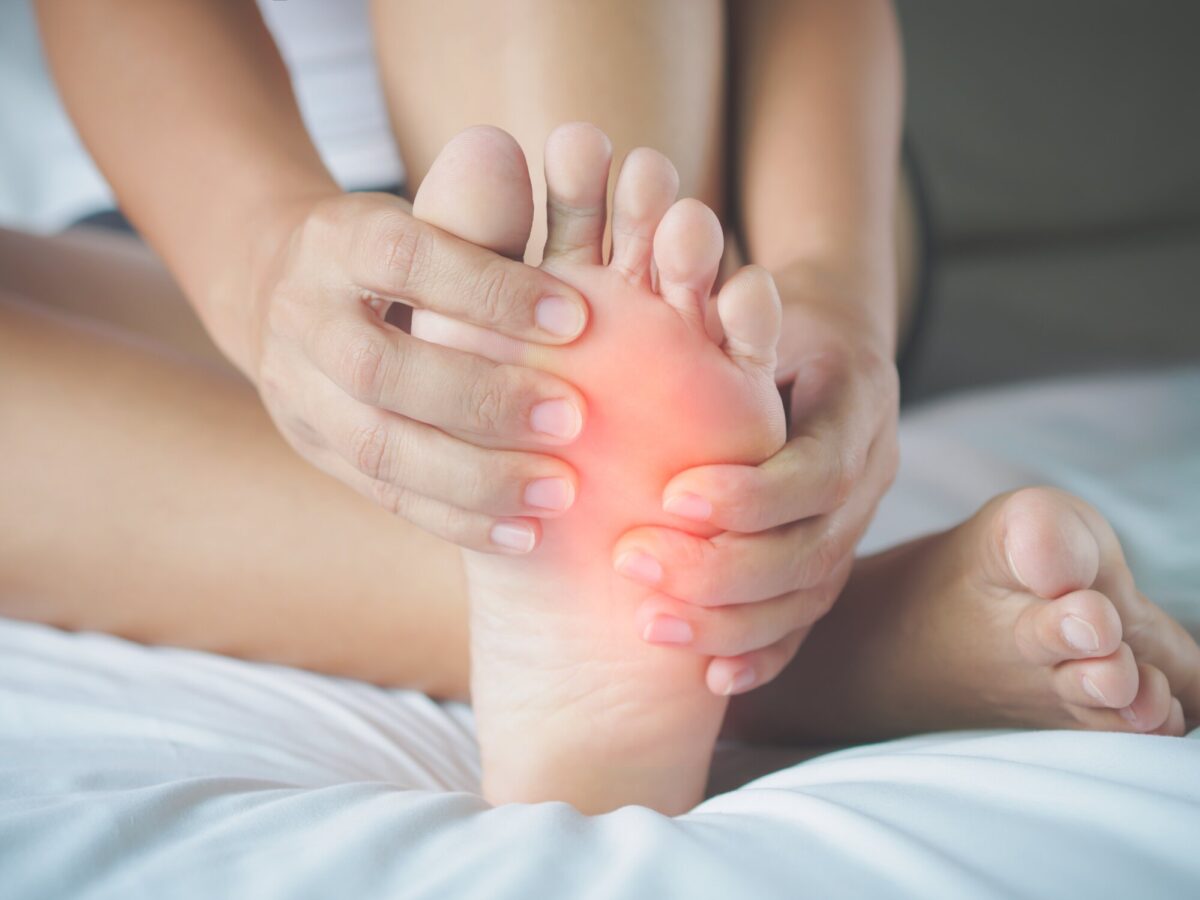Surgical Options for Morton’s Neuroma and How They Differ from MTP Synovitis Treatments

Welcome to Gotham Footcare, New York City’s leading center for board-certified podiatrists specializing in exceptional foot and ankle care. Our practice, renowned as one of Manhattan’s top providers for seven consecutive years, excels in offering comprehensive treatment for a variety of foot and ankle conditions. In this blog, we’ll examine the surgical options available for treating Morton’s neuroma and how they differ from treatments for MTP synovitis. At Gotham Footcare, our expert podiatrists provide advanced surgical solutions tailored to effectively address Morton’s neuroma while carefully distinguishing these approaches from those used for managing MTP synovitis. This detailed exploration ensures that each patient receives the most appropriate and effective care based on their specific condition. We are dedicated to delivering compassionate, individualized care to achieve the best possible outcomes. To schedule an appointment with our skilled specialists, call 917-979-2692. With convenient locations in midtown and downtown Manhattan, Gotham Footcare offers accessible and customized foot and ankle care designed just for you.
Surgical Options for Morton’s Neuroma and How They Differ from MTP Synovitis Treatments
Surgery is an important way to treat people with painful foot conditions like Morton’s neuroma and MTP (metatarsophalangeal) synovitis when non-invasive treatments don’t work well enough to control their symptoms. While both diseases can cause excruciating pain and hinder daily activities, the surgeries used to treat them differ in their mechanisms, appearance, and objectives. The goal of this introduction is to give you an idea of the different types of surgery that can be used to treat Morton’s neuroma and MTP synovitis.
Morton’s neuroma occurs when the tissue around a nerve that travels to the toes thickens. This usually happens between the third and fourth metatarsal heads. When someone has Morton’s neuroma, surgery is typically performed to remove the inflamed tissue and relieve pressure on the affected nerve in order to relieve pain and regain function. Some common surgeries are neuroma excision, which means the neuroma is surgically removed, and neuroma decompression, which means different surgical methods are used to relieve pressure on the nerve.
MTP synovitis, on the other hand, is an inflammation of the synovial membrane around the metatarsophalangeal joints in the foot. This causes pain, swelling, and stiffness. Surgery for MTP synovitis aims to remove the inflammation at its source and get the joint working normally again. Treatment for MTP synovitis often involves surgery. Synovectomy, which removes the swollen synovial tissue, and arthrodesis, which fuses the affected joint to make it stronger and less painful, are two popular procedures.
Importance of Surgical Intervention for Morton’s Neuroma and MTP Synovitis Treatments
Surgery is an important part of treating Morton’s neuroma and MTP (metatarsophalangeal) synovitis because it can give long-lasting relief and raise the quality of life for people who haven’t reacted well to non-invasive methods. Medication, physical therapy, orthotic devices, and corticosteroid injections are some of the non-surgical treatments that may help many patients manage their symptoms. However, when these treatments fail or the conditions significantly hinder daily activities, surgery becomes necessary. For solutions to Morton’s neuroma and MTP synovitis, the following points make it clear how important surgery is:
Getting to the root of the problem: Surgery is the only way to get to the root cause of Morton’s neuroma and MTP synovitis. Surgery, such as neuroma removal or decompression, removes the swollen nerve or relieves pressure on the nerve in Morton’s neuroma patients, thereby reducing pain and discomfort. People with MTP synovitis can undergo surgical procedures such as synovectomy or arthrodesis to remove the inflamed synovial tissue or stabilize the damaged joint, thereby reducing swelling and improving function.
Providing Long-Term Relief: Surgery for Morton’s Neuroma and MTP Synovitis can provide long-term relief from pain and functional impairment, especially when non-surgical methods have failed or only provide short-term relief. Surgical procedures attempt to prevent symptoms from returning and improve overall outcomes for patients by addressing the root problem and stabilizing the affected parts.
Improving Quality of Life: Morton’s Neuroma and MTP Synovitis can cause chronic foot pain and disability, which can have a significant impact on a person’s quality of life by making it harder for them to do daily tasks, work, exercise, and enjoy leisure activities. Surgery may be able to restore mobility, ease pain, and improve functional freedom, which means that patients can feel better about themselves and get back to doing the things they normally do with more comfort and ease.
Tailored Treatment Approach: Surgery for Morton’s Neuroma and MTP Synovitis allows doctors to customize the treatment based on each patient’s symptoms, severity of the condition, anatomy, and treatment goals. Surgeons can adapt surgical methods and processes to meet the unique needs of each patient, improve outcomes, and lower the risks and problems that can come up during surgery.
Patient Satisfaction and Outcomes: Recent research has shown that surgery for Morton’s neuroma and MTP synovitis can make patients very happy and improve their results, especially when non-surgical treatments have not worked or were not enough. After surgery, patients often say they feel a lot less pain, can do things better, and have a better quality of life. This shows that surgery is an important and effective way to treat these diseases.
Surgical Options for Morton’s Neuroma
Surgical intervention for Morton’s neuroma is usually considered when conservative treatments fail to offer enough relief or when the condition significantly limits daily functioning. There are several surgical approaches for treating Morton’s neuroma, each with its own set of indications, procedures, and potential outcomes. Some common surgical solutions for Morton’s neuroma are as follows:
- Neuroma decompression: Neuroma decompression includes reducing pressure on the afflicted nerve by cutting surrounding tissues or structures that cause compression, such as ligaments or fibrous bands.
Indications and Patient Selection: Patients with milder symptoms or those seeking a less invasive surgical procedure may benefit from neuroma decompression. We carefully evaluate candidates for neuroma decompression to establish the feasibility of the operation and the likelihood of symptom relief.
Surgical Techniques and approaches: Depending on the location of the neuroma and the surgeon’s preference, we can perform neuroma decompression using a variety of surgical procedures, including dorsal or plantar approaches. The goal is to relieve pressure on the afflicted nerve while protecting the surrounding tissues and structures.
Potential Risks and Complications: Neuroma decompression poses similar risks to neuroma excision, including infection, nerve injury, and scar tissue formation. Although rare, complications can occur, particularly if an inexperienced physician performs the procedure.
- Neurectomy: A neurectomy is a surgical procedure that removes the damaged nerve that causes Morton’s neuroma. The operation tries to eliminate the source of pain and discomfort by destroying nerve fibers that carry sensory impulses.
Indications and Patient Selection: When previous surgical treatments have failed to provide relief or when the neuroma is in an inaccessible position for effective decompression or excision, neurectomy is often considered. We carefully evaluate candidates for neurectomy to determine the severity of their symptoms and their chances of success with surgery.
Surgical Techniques and approaches: Depending on the location and size of the neuroma, surgeons can perform a neurectomy using either open or minimally invasive procedures. Surgeons carefully identify and dissect the damaged nerve to ensure total excision while limiting injury to neighboring tissues.
Potential risks and complications: Potential risks and complications of neurectomy include infection, nerve injury, stump neuroma development (regrowth of nerve fibers), and prolonged discomfort. Complications can occur, particularly when an inexperienced physician performs the procedure.
- Cryosurgery: Cryosurgery destroys the nerve fibers that cause Morton’s neuroma by freezing the damaged nerve tissue at extremely low temperatures. By removing the source of suffering, the operation aims to provide long-term pain relief.
Indications and Patient Selection: Cryosurgery may be considered for Morton’s neuroma patients who desire a minimally invasive treatment option or have not responded to conservative treatments. We thoroughly evaluate candidates for cryosurgery to determine their suitability for the operation and the possibility of symptom improvement.
Surgical techniques and approaches: Percutaneous cryosurgery involves inserting a probe under ultrasound guidance into the affected location and delivering cold temperatures to the nerve tissue. You can complete the technique on an outpatient basis and it is less invasive.
Potential Risks and Complications: Although rare, a small risk of infection, abscess or delayed healing at the incision site.
- Radiofrequency ablation: Radiofrequency ablation is a procedure that uses high-frequency electrical currents to heat and kill nerve tissue, resulting in Morton’s neuroma. The operation aims to provide long-term pain relief by disrupting the transmission of pain signals from the damaged nerve.
Indications and Patient Selection: Individuals with Morton’s neuroma who want a minimally invasive treatment option or have not responded to conservative therapy may be candidates for radiofrequency ablation. We carefully evaluate candidates for radiofrequency ablation to determine their suitability for the procedure and the possibility of symptom relief.
Surgical techniques and approaches: Percutaneous radiofrequency ablation involves inserting a specialized probe under ultrasound guidance into the affected location and delivering heat to the nerve tissue. You can complete the technique on an outpatient basis and it is less invasive.
Potential Risks and Complications: Radiofrequency ablation therapy may cause nerve damage, skin burns, and prolonged discomfort, which are all potential risks of radiofrequency ablation therapy. Although rare, complications can occur, particularly if an inexperienced practitioner performs the surgery.
Surgical solutions for Morton’s neuroma aim to relieve pain and improve function by targeting the underlying pathology and reducing the pressure on the affected nerve. The surgical approach varies depending on the degree of symptoms, the location and size of the neuroma, patient preferences, and the surgeon’s expertise. Individuals seeking surgery for Morton’s neuroma should consult with a surgical podiatrist to identify the best course of action based on their specific requirements and circumstances.
Surgical Options for MTP Synovitis
Surgery is needed for MTP (metatarsophalangeal) synovitis when non-surgical treatments don’t help enough or when the condition makes it very hard to do normal things. Several surgical options exist for the treatment of MTP synovitis, each with its own set of indications, procedures, and potential outcomes. Some common surgical options for MTP synovitis are listed below:
- Synovectomy: Synovectomy is a surgical procedure that removes inflammatory synovial tissue around the afflicted metatarsophalangeal joint. The technique seeks to relieve pain and inflammation by removing the source of synovial irritation.
Indications and Patient Selection: People with persistent or severe MTP synovitis symptoms who do not respond to conservative therapies typically receive advice for synovectomy. We thoroughly evaluate candidates for synovectomy to determine the severity of their condition and the need for surgery.
Surgical Techniques and Approaches: Depending on the level of synovial involvement and the surgeon’s preference, we can perform a synovectomy either openly or arthroscopically. The goal is to remove the inflammatory synovial tissue while retaining the surrounding structures and joint function.
Potential risks and complications: of synovectomy include infection, hemorrhage, joint stiffness, and synovitis recurrence. Although they are rare, complications can occur, particularly when an inexperienced surgeon performs the procedure.
Arthrodesis, also known as joint fusion, is a surgical procedure that stabilizes the problematic metatarsophalangeal joint by fusing adjacent bones together. The surgery seeks to reduce discomfort and enhance joint stability.
- Arthrodesis:
Indications and Patient Selection: We typically recommend arthrodesis for patients with severe or advanced MTP synovitis who have not responded to conservative therapies or are at risk of joint instability. We carefully evaluate candidates for arthrodesis to determine the severity of their symptoms and the appropriateness of joint fusion.
Surgical techniques and approaches: Depending on the location and degree of the involved joint, a variety of surgical methods, including dorsal or plantar procedures, can perform arthrodesis. The goal is to produce a stable joint fusion while maintaining the surrounding soft tissues.
Potential Risks and Complications: Arthrodesis risks include nonunion (bones failing to fuse), malunion (bones misaligned), infection, and hardware-related problems. Although rare, complications can occur, particularly if an inexperienced physician performs the procedure.
- Joint Resurfacing: Joint resurfacing is the surgical contouring or repair of the damaged metatarsophalangeal joint’s articular surfaces in order to restore joint function and relieve discomfort. The method aims to enhance joint congruency and minimize friction between the joint surfaces.
Indications and Patient Selection: People with early or mild MTP synovitis, those who have not responded to conservative therapies, and those who are not candidates for more invasive surgical procedures may consider joint resurfacing. We carefully evaluate candidates for joint resurfacing to determine the severity of their symptoms and the suitability of the joint repair.
Surgical Techniques and Approaches: We can perform joint resurfacing using a variety of surgical techniques, including cartilage debridement, osteochondral grafting, and synthetic cartilage replacement. The goal is to restore joint function, alleviate pain, and maintain joint mobility.
Potential risks and complications: Potential risks and complications include infection, poor wound healing, implant failure, and synovitis recurrence. Although they are rare, complications can occur, particularly when an inexperienced surgeon performs the procedure.
- Tendon Transfer: Tendon transfer is a surgical procedure that repositions or reinforces the tendons surrounding the problematic metatarsophalangeal joint in order to restore joint stability and function. The surgery tries to disperse forces throughout the joint and reduce pain.
Indications and Patient Selection: Tendon transfer may be considered for MTP synovitis patients who have weakness or imbalance in the muscles surrounding the afflicted joint, resulting in instability or dysfunction. We carefully evaluate candidates for tendon transfer to determine the severity of their complaints and the appropriateness of tendon realignment.
Surgical Techniques and Approaches: Various surgical techniques, including direct tendon repositioning, tendon grafting, and tendon lengthening or shortening operations, can perform tendon transfer. The goal is to restore normal biomechanics and functionality to the afflicted joint.
Potential risks and complications: Potential risks and complications of tendon transfer include tendon rupture, tendon adhesions, joint stiffness, and synovitis recurrence. Although rare, complications can occur, particularly if an inexperienced physician performs the procedure.
By addressing the underlying pathology and restoring normal biomechanics, surgical solutions for MTP synovitis aim to relieve pain, reduce inflammation, and enhance joint function. The surgeon’s expertise, patient preferences, and the intensity of symptoms all influence the surgical approach. Individuals seeking surgery for MTP synovitis should consult with a trained healthcare specialist to decide the best method based on their specific needs and circumstances.
Differences Between Surgical Options for Morton’s Neuroma and MTP Synovitis
Morton’s neuroma surgery aims to relieve nerve compression and remove inflammatory tissue that causes the neuroma. Procedures such as cryosurgery, decompression, and neurectomy target the swollen nerve or relieve pressure on the affected nerve to treat pain and discomfort.
MTP Synovitis surgery aims to reduce inflammation in the synovial membrane surrounding the metatarsophalangeal joint and restore joint function. Synovectomy, arthrodesis, and joint resurfacing are all procedures that target diseased synovial tissue or stabilize the afflicted joint in order to reduce inflammation and enhance joint stability.
Anatomical Considerations and Surgical Approaches:
Anatomical considerations and surgical techniques for Morton’s neuroma include dorsal or plantar incisions, depending on their location and size. We can conduct procedures openly or minimally invasively to remove or decompress the afflicted nerve while conserving surrounding structures.
Surgical options for MTP synovitis include dorsal or plantar incisions, depending on the extent of synovial involvement and the requirement for joint stability. We can conduct procedures open or arthroscopically to eliminate inflammatory synovial tissue, stabilize the damaged joint, or restore joint congruency.
Postoperative Rehabilitation:
Postoperative rehabilitation for Morton’s neuroma may include immobilization, physical therapy, and a progressive return to weight-bearing activities. The recovery period varies according to the extent of surgery and the patient’s specific needs.
Postoperative rehabilitation for MTP synovitis may include protected weight bearing, range of motion exercises, and a gradual return to activities. The type of surgery, the degree of joint involvement, and the patient’s adherence to postoperative recommendations all influence the recovery time.
Conclusion
Last but not least, the surgical options for Morton’s neuroma and MTP synovitis are tailored to the specific causes and symptoms of each condition. While similar illnesses can cause substantial pain and functional impairment, surgical procedures have different targets, anatomical concerns, and potential outcomes. Surgical methods for Morton’s neuroma essentially aim to relieve pain and enhance function by treating compression on the afflicted nerve and eliminating the inflammatory tissue that causes the neuroma. Cryosurgery, decompression, and neurectomy are procedures that target the swollen nerve or relieve pressure on the damaged nerve, providing long-term relief.
In contrast, surgical treatments for MTP synovitis are aimed at minimizing inflammation in the synovial membrane surrounding the metatarsophalangeal joint and restoring joint function. Synovectomy, arthrodesis, and joint resurfacing are all procedures that target diseased synovial tissue or stabilize the afflicted joint in order to reduce inflammation and enhance joint stability.
These differences in surgical goals and methods are due to the different pathophysiological processes that cause Morton’s neuroma and MTP synovitis. MTP synovitis is distinguished by inflammation of the synovial membrane around the afflicted joint, as opposed to Morton’s neuroma, which involves compression and inflammation of a specific nerve.
FAQ’s
- What are the surgical options for treating Morton’s neuroma?
At Gotham Footcare, we offer several surgical options for treating Morton’s neuroma, including:Neurectomy: This procedure involves the removal of the affected nerve to relieve pain. It is generally considered when non-surgical treatments, such as physical therapy or injections, have not been effective.Cryosurgery: This technique uses extreme cold to destroy the nerve tissue, providing pain relief with minimal risk of complications and a quicker recovery time compared to traditional surgery.Endoscopic Surgery: This minimally invasive approach uses small incisions and a camera to guide the removal of the neuroma, resulting in less postoperative discomfort and faster recovery.Our specialists will work with you to determine the most suitable surgical option based on your specific condition and treatment history. - How does treatment for Morton’s neuroma differ from treatment for MTP synovitis?
The treatment strategies for Morton’s neuroma and MTP synovitis differ significantly due to the distinct nature of these conditions:Morton’s Neuroma: For Morton’s neuroma, surgical options focus on removing or destroying the affected nerve. Techniques like neurectomy or cryosurgery are often employed to provide lasting relief from pain.MTP Synovitis: Treatment for MTP (metatarsophalangeal) synovitis typically involves addressing inflammation in the joint. This may include procedures to clean out the inflamed tissue or repair the joint, often combined with anti-inflammatory medications and physical therapy to reduce swelling and pain.Understanding these differences ensures that each condition is treated with the most effective approach tailored to the patient’s specific needs. - What should I expect during the recovery period after surgery for Morton’s neuroma?
Recovery after surgery for Morton’s neuroma at Gotham Footcare varies depending on the type of procedure performed:Neurectomy: Recovery typically involves a few weeks of rest and limited activity. Pain and swelling may persist for a short time, but most patients resume normal activities within 4 to 6 weeks.Cryosurgery: This technique generally results in a quicker recovery, with most patients experiencing reduced pain and swelling within a week. You may be advised to limit activities for a few days to allow the area to heal properly.Endoscopic Surgery: Recovery is often faster due to the minimally invasive nature of the procedure. Patients usually experience less postoperative pain and can return to their daily activities within 2 to 4 weeks. - How do I know if I need surgery for Morton’s neuroma?
At Gotham Footcare, surgery for Morton’s neuroma is typically considered if conservative treatments such as physical therapy, corticosteroid injections, or changes in footwear have not provided sufficient relief. We evaluate the need for surgery based on:Severity of Symptoms: Persistent pain, numbness, or discomfort despite non-surgical treatments.Impact on Daily Life: Significant impairment of daily activities or quality of life due to the condition.Response to Conservative Treatments: Lack of improvement or worsening of symptoms with conservative measures.Our specialists will conduct a thorough assessment to determine if surgery is the most appropriate option for your specific situation. - Are there any risks or complications associated with surgical treatment for Morton’s neuroma?
As with any surgical procedure, there are potential risks and complications associated with treating Morton’s neuroma. At Gotham Footcare, we discuss these with our patients to ensure informed decisions:Neurectomy Risks: Potential risks include persistent pain, formation of a stump neuroma, numbness in the foot, or changes in foot sensation.Cryosurgery Risks: Although minimally invasive, risks may include temporary increased pain, swelling, or rare instances of incomplete nerve destruction.Endoscopic Surgery Risks: Risks include infection, delayed wound healing, or residual pain, though these are less common due to the minimally invasive nature of the procedure.Our team will provide comprehensive information about the risks and work with you to minimize them and ensure a successful outcome. - How does the recovery from surgery for Morton’s neuroma compare to recovery from MTP synovitis surgery?
Recovery from surgery for Morton’s neuroma and MTP synovitis varies based on the nature of the surgery:Morton’s Neuroma Surgery: Recovery can range from a few weeks to a few months, depending on the procedure. Neurectomy may require 4 to 6 weeks for normal activity resumption, while cryosurgery often allows for quicker recovery within 2-3 weeks.MTP Synovitis Surgery: Recovery time can also vary. Procedures for MTP synovitis may involve a period of immobilization or reduced activity, with a typical recovery period of 4 to 8 weeks. This may include time for inflammation to subside and the joint to heal.Our specialists will guide you through the recovery process for your specific surgery and provide tailored recommendations to facilitate optimal healing.For further information or to schedule a consultation, contact us at 917-979-2692. Our team at Gotham Footcare is here to provide expert care and support throughout your treatment journey.








